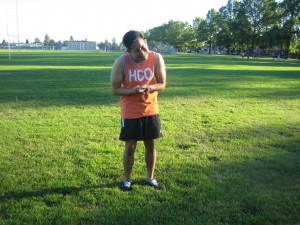Venomous or poisonous snake bites involves a punctured wound caused by a snake capable of secreting, injecting and spitting a toxin into the wound where then toxins can be absorbed. Most common venomous snakes include rattlesnakes, cottonmouths/water moccasins, coral snakes and copperheads.
The non-venomous or non-poisonous snake bites are made by snakes that do not release a toxin. The bites made by a non-venomous snake or dry bites can cause damage on the tissue or cause infections. Some snakes do not bite except if they are bothered or handled incorrectly.
Fangs can be secure or folds back until the snake delivers a bite. Snakes with fixed fangs such as the coral snake affect the nervous system while snakes with folded fangs such as the rattlesnakes affects the blood cells. All types of snake bites can cause damage to the tissues.
Symptoms of snake bites
- Presence of pair of punctured marks at the wound
Numbness and tingling sensation on the face and on the limbs - Swelling and redness around the bitten area
- Nausea and vomiting
- Disturbed vision
- Severe pain can be felt at the bitten area
- Increased salivation and sweating
- Numbness and tingling sensation on the face and on the limbs
- Difficulty in breathing and can stop in severe cases
Treatment of snake bites
Venomous snakes
- Remain calm and do not panic to prevent an increase in the heart rate and spread of the venom throughout the body. Remain calm and quiet as possible.
- Take note of the appearance of the snake. If possible, take a picture of the snake.
- Clean the wound properly and avoid flushing water on the bitten area. Soak a clean washcloth and use it on the wound thoroughly and then cover with a bandage.
- Avoid catching the snake.
- Do not apply a tourniquet on the bite site. Keep the area at or below the level of the heart to slow down the spread of venom in the body. Splint the bitten area using sticks or boards and place on either side of the bite site and tie a piece of cloth at the bottom and top of the boards in order to keep them in place.
- Remove clothing, jewelry or other items that can cause constriction.
- Drink plenty of water to stay hydrated. Avoid alcohol and caffeine.
Non-venomous snakes
- Stop the bleeding by applying pressure on the wound using sterile gauze or bandage to prevent loss of blood.
- Clean the wound using clean water and soap at least several minutes and then rinse it thoroughly with water. Wash it again if possible. Pat dry using sterile gauze. An alcohol-soaked pad can also be used for the wound.
- Apply the prescribed antibiotic ointment on the affected area and cover it with a bandage.
If the signs of infection are present such as red-colored streaks, redness, swelling, drainage, fever and a tetanus shot is needed, it is best to seek medical help immediately.

